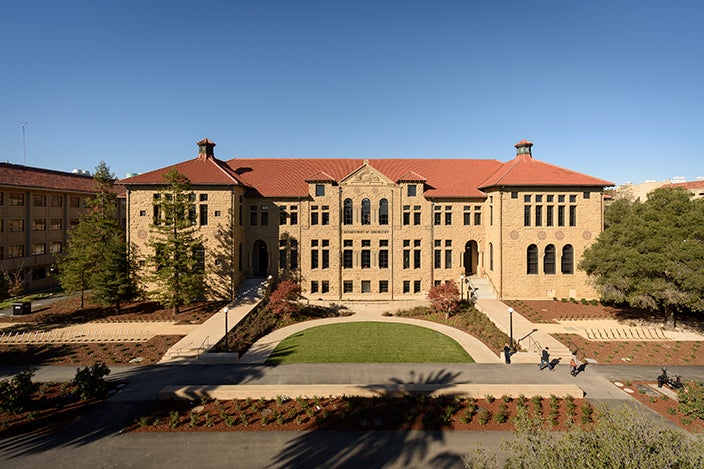Stanford releases fundraising results
In 2015–16, philanthropic gifts to Stanford provided $951.1 million for financial aid, research, faculty and more. The year also marked the conclusion of the Campaign for Stanford Medicine, which raised gifts for the new Stanford Hospital and biomedical research initiatives.
Stanford University reported $951.1 million in philanthropic gifts during the fiscal year that ended Aug. 31, 2016, reflecting the financial support of more than 80,000 donors. The fundraising total comprises gifts and pledge payments received from Sept. 1, 2015, through Aug. 31, 2016; it does not include pledges of future support or government grants.

Gift support made possible the restoration and renovation of the landmark Old Chemistry building as the Sapp Center for Science Teaching and Learning. (Image credit: L.A. Cicero)
Philanthropic gifts are essential to supporting the university’s education and research mission, including financial aid. Stanford has nearly doubled its funding for financial aid since 2006, with more than $450 million of university funds spent on financial aid for graduate and undergraduate students in fiscal year 2015–16. Today, families living in the United States with incomes below $125,000 pay no undergraduate tuition, and Stanford covers tuition, room and board for families with incomes below $65,000. Last year, nearly 80 percent of undergraduate students graduated debt-free.
Funds were raised for key priorities across the university:
- $103.3 million for financial aid for graduate and undergraduate students
- $60.1 million to attract and support faculty
- $355.7 million for research and programs
- $73.9 million for buildings and facilities
- $32.4 million for Stanford Health Care
- $55.9 million for Lucile Packard Children’s Hospital Stanford
The majority of gifts made to the university were under $1,000, with nearly half of all donors making gifts of $100 or less.
“As the university’s new president, I am humbled and inspired by the commitment of our alumni, parents and friends,” said Marc Tessier-Lavigne, Stanford president. “Their generosity allows Stanford to advance its goals of fostering education, research and creativity for the benefit of humanity. I am deeply grateful for their support and for the contributions of my predecessor, John Hennessy, and former Provost John Etchemendy.”
The 2015–16 fiscal year marked the conclusion of the Campaign for Stanford Medicine, which launched in 2012. The campaign raised $1.7 billion from more than 30,000 individuals, corporations and foundations to fuel investments in biomedical research and teaching, build the new Stanford Hospital and translate biomedical knowledge into better patient care.
“We are so grateful to all the donors to the Campaign for Stanford Medicine who came together to share our vision of what is possible in the years ahead,” said Lloyd B. Minor, MD, dean of the School of Medicine. “Their generosity and vision are empowering a future that is very bright – for biomedical science, for our patients and for society.”
Other gifts were raised to launch Knight-Hennessy Scholars, a graduate-level scholarship program that aims to prepare a new generation of global leaders; to open two new undergraduate student residences, Meier Hall and Norcliffe Hall; and to support Cardinal Service, a university-wide initiative designed to elevate and expand service as a distinctive feature of a Stanford education.
The majority of donors contributed to the university through annual funds, which raised $67.0 million in unrestricted support. For example, The Stanford Fund for Undergraduate Education raised $25.2 million toward financial aid, academic programs and student-led organizations. Annual gifts can be used in the year they are received to meet areas of greatest need.
The fundraising total includes $234.8 million in endowed gifts, which are invested to support the university in perpetuity. Last year, the endowment payout covered approximately 23 percent of Stanford’s operating budget.
“Our donors are investing in Stanford’s mission, and we take that responsibility very seriously,” said Martin Shell, vice president for development. “The breadth and depth of support from Stanford alumni, parents and friends is a testament to the great work of our faculty and students, as well as the strength of the university’s leadership.”
Gifts were raised by Stanford’s Office of Development and the Lucile Packard Foundation for Children’s Health.
